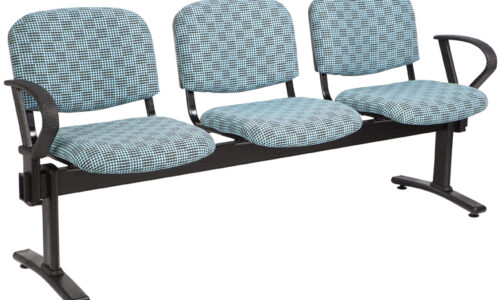Musculoskeletal Disorders
Also commonly known as Computer injuries, Musculoskeletal Disorders. These include repetitive strain injuries and back pain, posture disorders mostly due to incorrect seating on office chairs.
What are Musculoskeletal disorders?
Musculoskeletal disorders (MSD) is a condition that affects the part of the body that is subjected to repeated stress, strain or both. The musculoskeletal system is an organ system that enables the body to move through the use of the muscle and skeletal systems in combination.
MSD occurs when a part of the musculoskeletal system is called on to work harder, stretch further or otherwise function at a greater level then it is prepared for. The initial impact to the affected area may be minute, but it can easily cause damage and great discomfort if it occurs repeatedly. It is the build up of this trauma that causes the disorder.
Work-related MSD (computer injuries) develops from repeated stress and strain to the body’s muscles, tendons, ligaments, joints and nerves. The back, shoulders, neck, arms and hands are most commonly affected due to long hours on office chairs.
Posture At A Computer
What is the correct posture at a computer? It is important for our long term health have the correct computer posture. Having the wrong ergonomic posture will lead to both short term discomfort and long term Musculoskeletal disorders.
Note that posture at a computer is the same whether you are working from a laptop or desktop. However, to achieve the same correct posture at your desk, you may have to adjust components of your workstation, such as height of screen, etc. It is also important to purchase the correct office furniture suitable to your specific body requirements.
Correct Computer Posture
This is the best computer posture pictures I’ve come across so far.

To have correct Computer Posture
Get suitable office chairs, hopefully height adjustable. (see Ergonomic Chairs).
-
Sit far back in with your back touching the back support.
-
Adjust the height of your chair by its function or stack phone books under your seat cushion. such that when you ‘type’ your elbows are at a right angle.
-
Now check your feet. Make a right angle with your knees. Are your feet touching the ground? If not, get a foot stool or more phonebooks (I guess they are real handy now) to adjust your foot rest until your knees make a right angle like your elbows.
-
Look straight and your computer monitor screen should be at eye level or slightly under eye level (to prevent neck strain).
-
Adjust your monitor’s height. (more phone books?)
-
Practice good posture; do not slump in your seat.
Self check! Bad Computer Posture

Good Ergonomic Work Habits
Now that you’ve established some good computer posture with your office chairs, also remember that you should practice good work habits. Because good posture at a computer is not enough if you don’t observe these ergonomic practices.
-
Get up from your seat and take a break every half an hour. Break up monotonous tasks and mix them up.
-
Alternate your mousing hand.
-
Rest your eyes by staring at a green picture or looking in the distance for a few seconds.
-
Practice the correct typing posture by keeping your wrists straight.

